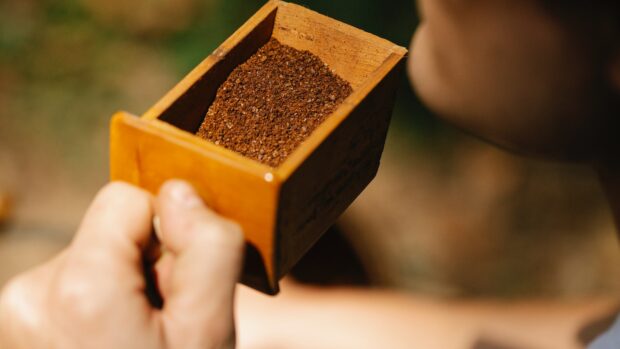University of Colorado Develops Sustainable 3D Printing Method Using Coffee Grounds
Assistant Professor Michael Rivera from the University of Colorado has discovered a groundbreaking way to utilize coffee grounds for 3D printing. By combining the caffeinated by-product with a few key ingredients, he has successfully created robust and biodegradable projects once they solidify. Rivera’s hope is that his innovation will inspire others to explore more sustainable techniques in the field of 3D printing.
The demand for a sustainable and environmentally friendly future continues to grow, however, new and innovative ideas are needed to make this a reality. We must find ways to recycle or repurpose waste materials, and the coffee 3D printing method is currently one of the most intriguing options available. In addition to being an effective recycling technique, it also has a wide range of applications.
This article will delve into the unique 3D printing method developed by Michael Rivera. Furthermore, I will provide an overview of 3D printing to ensure readers have a comprehensive understanding of this remarkable discovery.
How Does the Coffee 3D Printing Technology Work?
Simply feeding raw coffee grounds into a 3D printing machine would cause it to malfunction. This is why Michael Rivera and his team had to transform the coffee grounds into a thermoplastic-like substance beforehand. The University of Colorado mixed the coffee grounds with cellulose and xanthan gum, which are common food additives that easily degrade in compost bins. They then blended the mixture with water until it reached a consistency similar to peanut butter.
However, this gooey mixture couldn’t be loaded directly into their 3D printer. To overcome this hurdle, Rivera modified his printer by attaching plastic tubes and a coffee-paste syringe. With these modifications in place, they proceeded to test their new coffee 3D printing method. The results were astonishing – their creations were as durable as unreinforced concrete. Rivera stated, “We’ve created objects with tremendous utility and durability. We’ve dropped them multiple times, and they have yet to break.”
A science update website called New Atlas reported that Rivera and his team successfully printed various objects using their new technology, including jewelry pieces and disposable espresso cups. Furthermore, the addition of activated charcoal provided the materials with electrical conductivity. The University of Colorado researchers also discovered that coffee 3D printing is ideal for creating plant pots. Traditionally, indoor plants are cultivated in pots before being transferred to outdoor plots. However, with coffee-printed pots, seedlings can be planted directly in the ground along with their biodegradable containers, which decompose over time and provide nutrients to the developing plants.
Biodegradability is a significant advantage of the coffee 3D printing material, making it a more sustainable alternative to conventional plastics. Unlike regular thermoplastics, which take thousands of years to decompose, the coffee-based material breaks down naturally. Despite the success of his coffee 3D printing technique, Rivera acknowledges that it is unlikely to become widely adopted. Instead, he believes that it will serve as a guide for the development of future sustainable 3D printing materials, which may eventually replace traditional plastics.
How Does 3D Printing Work?
For readers who may be unfamiliar with 3D printing, it involves the layering of molten plastic to create various shapes. Its applications range from creating keychains to producing prosthetic implants. In the dental industry, this technology is used to produce dental impressions that accurately match a patient’s mouth and teeth. In May 2023, Mark Skylar-Scott, an assistant professor of bioengineering at the Stanford School of Engineering and Medicine, made headlines by successfully using 3D printing to create living organs. The process begins with the preparation of stem cells, which are then transformed into organ cells suitable for 3D printing tissue using a special formula. Each line of stem cells is genetically engineered to respond to specific drugs, allowing them to differentiate into specific cell types when activated.
As of now, the Stanford scientists have only managed to create tube-like structures similar to human arteries that can pump fluid. However, they remain hopeful that with further research and development, they will be able to produce more complex organs and body parts.
Conclusion
Assistant Professor Michael Rivera’s use of coffee grounds as a material for 3D printing represents a significant step towards sustainability. Unlike most 3D printers that rely on thermoplastics, Rivera’s coffee-based material is biodegradable and offers a range of applications. It is especially suitable for indoor gardening, as it decomposes naturally and provides essential nutrients to plants. Additionally, the material can gain electrical conductivity when activated charcoal is added.
To learn more about the coffee 3D printing method, visit the Association of Computing Machinery website. Stay updated with the latest digital trends and tips at Inquirer Tech.
Denial of responsibility! Vigour Times is an automatic aggregator of Global media. In each content, the hyperlink to the primary source is specified. All trademarks belong to their rightful owners, and all materials to their authors. For any complaint, please reach us at – [email protected]. We will take necessary action within 24 hours.


